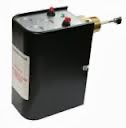The popularity of ductless mini-split heat pumps has grown
tremendously in recent years. They’re a great way to add cooling to a
hydronically heated home because they don’t need bulky ductwork. But like many new
things, there’s a tendency to apply them to as many situations as possible,
including some that they may not be well suited for. One such misapplication is
as the sole heating and cooling source for a small addition.
Ductless mini-split heat pumps are usually an air-to-air
heat pump — meaning it takes outside air and strips it of its heat value and
transfers that heat to your home to provide space heating. For cooling, the
cycle is reversed — it pulls the heat out of your house and expels it to the
outdoors. You could think of a heat pump as an air conditioner that’s capable
of working in reverse.
Heat pumps are nothing new, but the configuration of the
ductless mini-split is. The condensing unit is located outdoors and a
refrigeration lineset, small drain and wiring are run into your home through a
3˝
opening in an outside wall. They supply the indoor unit, which is usually
mounted high on a wall and contains the blower and indoor controls. Ductless
mini-splits are incredibly quiet (inside and out) and efficient.
I’m often asked to design a heating and cooling system for a
small addition to an existing home (less than 1000 sq. ft). The first thing I
look at is the capacity of the existing system to handle the addition’s extra heat
and cooling load. More often than not, especially with forced air, the existing
system can’t do the job. The system in a hydronically heated home can almost
always handle the additional heating load but it obviously can’t provide
cooling.
That usually leads to someone suggesting a ductless
mini-split heat pump for heating and cooling the addition. It’s tempting,
because it’s a relatively easy, quick and inexpensive installation. And here’s
where the misapplication comes in. As an example, let’s apply a ductless
mini-split heat pump to a typical 700 sq. ft. master bedroom, bath and laundry
addition.
An addition like this would typically have about a 14,000
Btu/hr heat load on the coldest day of the year (considered 0˚F in the
Rochester, NY area). It would also require just under 1 Ton (12,000 Btu/hr) of
cooling on the warmest day of the year (considered 90˚F in this area). Both
design loads would keep the indoor temperature at 70˚F.
Now, when sizing a heat pump, you size for the greatest load (heating
or cooling) so you can be sure there’s enough capacity for both seasons. In our
example case, as with most applications in this climate, the largest load is
the heating load. So wouldn’t logic dictate that we’d need a heat pump rated
for 14,000 Btu/hr? Not so fast.
We also need to consider the fact that as the outdoor temperature
drops, so does the efficiency of the heat pump. In fact, even though some of
the newer models are capable of providing heat down to an outdoor temperature
of -4˚F, at those temperatures their heat output drops to near 50% of rated
capacity. So now we realize that we need to DOUBLE the capacity of the heat
pump to have any chance of maintaining our 70˚F indoor temperature on a 0˚F
day.
That means we’re looking at installing a heat pump with a 28,000
Btu/hr minimum capacity, which actually works out fairly well, because heat
pumps come in a 2-1/2-Ton size (30,000 Btu/hr). So now that we’ve decided that
we need a 30,000 Btu/hr unit for heating, let’s see how that works for the
cooling side.
Remember, the cooling load is 12,000 Btu/hr on the warmest days
(90˚F). And there’s a 30,000 Btu/hr capacity. Simple math tells us that on even
the warmest days, our heat pump is oversized (for cooling) by 250%. And, as
you’ve heard me preach before, in cooling (and heating), bigger is not
necessarily better.
Most of the better ductless mini-split heat pumps these days use
inverter technology to modulate the compressor speed, which tailors the output
to the load. With our example, the compressor would modulate down to 40% of
capacity on the WARMEST day. That means that on a milder day it may need to be
operating in the single-digit-capacity numbers. The problem arises when the
compressor is only capable of modulating down to 30% of capacity, meaning that
anything less than 75% of the maximum cooling load (in our example) will be
asking the heat pump to work below its minimum capacity — which will be the
bulk of the cooling season!
When a heat pump is asked to work in a range below its minimum
capacity, it will short-cycle and, as a consequence, fail to properly
dehumidify. We’ve discussed short-cycling and its consequences before — less
comfort, less efficiency, increased maintenance and shorter equipment life.
For this example addition, the ductless mini-split “kind of” does the
job. It can either do an acceptable job of heating with not-so-good cooling, or
an awesome job of cooling with unacceptable heating performance.
So if a ductless mini-split isn’t the answer to heating and cooling
your small addition, what is? Be sure to check next week’s Heidronics blog post
for the answer.
Heidronically yours,
Wayne







